Ah, the sweet anticipation of kayak season! As the sun begins to warm our days and the scent of fresh blooms fills the air, there’s no doubt that many outdoor enthusiasts are eagerly awaiting the start of the kayak season. But the big question on everyone’s mind is, when does kayaking season officially commence? The answer, of course, is not that simple. Several factors can influence the start of the kayaking season – from the weather and climate in your region to the type of water body you plan to explore.
To help you prepare for your next kayaking adventure, in this blog post, we’ll dive into the key factors determining when the kayak season begins for various locations, water conditions, and activities. From exploring serene lakes and rivers to braving the open ocean or reeling in your next big catch, we’ve got you covered. So break out your paddles, and let’s get ready to hit the water!
Contents
Contents
Dependence On Geographical Location And Climate

One crucial factor to consider when determining the start of kayak season is the geographical location and its associated climate. Whether you live in a coastal region, near a vast lake, or by a twisting river, the local climate will largely dictate your kayaking schedule.
| Region | Kayak Season Start |
| Southern US | Late March |
| Northern US | Late April |
| Caribbean | Year-round |
Regional weather patterns: understanding seasonal changes for kayaking
Every region has unique weather patterns that influence the ideal time for kayaking. For instance, the kayak season in warmer climates, such as Florida, can last almost year-round, while northern states might have a more limited window for paddling. It’s essential to understand the seasonal changes in your area to identify the optimal time for kayaking.
When to kayak in different parts of the United States?
The United States boasts an incredibly diverse range of climates and kayaking opportunities. For example:
- Northwest: Kayaking season typically runs from May to October, with cooler temperatures and stunning rainforest landscapes.
- Southwest: This region can experience sweltering summers (August is usually the hottest month), but extensive periods of good kayaking weather from March until November.
- Midwest: Here, the kayak season is generally between April and October. However, it’s essential to keep an eye out for sudden rainstorms and thunderstorms during the summer months.
- Southeast: In this area, the kayak season can extend almost year-round, with excellent opportunities for paddling in states like Florida, Georgia, and the Carolinas.
International kayaking destinations: finding your prime season
The varying climates and landscapes around the world offer numerous opportunities for memorable kayaking experiences. Just as with local paddling, it is critical to research the weather and climate of your international kayaking destination, as the optimal season can differ significantly from your home region. Pay attention to the unique weather patterns and water conditions of your chosen destination to enjoy safe and rewarding kayaking experiences abroad.
Kayak Season For Varying Water Bodies

When planning your kayaking trips, it’s essential to consider the different water bodies and how their unique characteristics affect the kayak season. In this section, we’ll dive into the details of three popular types of kayaking locations: lakes, rivers, and ocean coasts.
1. Lakes
Lakes are a tranquil and ideal setting for leisurely paddling or kayak fishing. In general, the kayaking season on lakes spans from late spring to early fall. Since lakes are smaller and confined bodies of water, they tend to warm up quickly compared to oceans or larger rivers.
- Spring: The kayak season on lakes typically begins once the ice-out occurs and water temperatures start to rise. Paddling during this time can be peaceful, but be prepared for some chilly weather and potentially higher water levels from the melting snow.
- Summer: This is the most popular time for kayaking on lakes, as the warmer weather and water make it a comfortable and enjoyable experience.
- Fall: As the leaves start to change color, the scenery becomes even more enchanting. The water temperatures are usually still manageable until late October, allowing for some beautiful autumn kayaking excursions.
2. Rivers
River kayaking seasons can vary greatly depending on the specific river and the characteristics of its watershed. For example, some rivers with significant snowmelt runoff might have a short season, while others with consistent flow year-round can be paddled in any season. Here’s a general guide to river kayaking seasons:
- Spring: In many regions, spring means high water levels, which can result in both challenging conditions for whitewater enthusiasts and calm water sections for leisure paddlers. Both scenarios need close attention to safety.
- Summer: The safest and most popular time for river kayaking tends to be during the summer months when water levels have dropped, and the flow is more manageable.
- Fall: As the leaves change color, fall kayaking allows for a picturesque paddling experience. Lower water levels and cooler temperatures might be encountered during this season.
3. Ocean Coastlines
Kayaking along ocean coastlines can be a breathtaking experience when timed correctly, as marine conditions and tides significantly affect the kayak season. Ocean kayaking season usually coincides with the warmest months of the year, but the specific timing depends on the local climate and latitude.
- Spring: Coastal kayaking may begin in late spring when air and water temperatures become more comfortable. Be aware of fluctuating water conditions as storms and weather systems can change quickly.
- Summer: This is the prime season for ocean kayaking. Warmer temperatures, calmer seas, and more predictable weather make it ideal to explore coastal areas.
- Fall: Early fall can still offer opportunities for ocean kayaking, but as the days grow shorter and cooler, the on-water conditions may become more unpredictable.
Ultimately, the kayak season varies across the different types of water bodies, and understanding the patterns associated with lakes, rivers, and ocean coastlines can help you make the most of your kayaking adventures.
Factors Affecting The Start Of Kayak Season in 2024
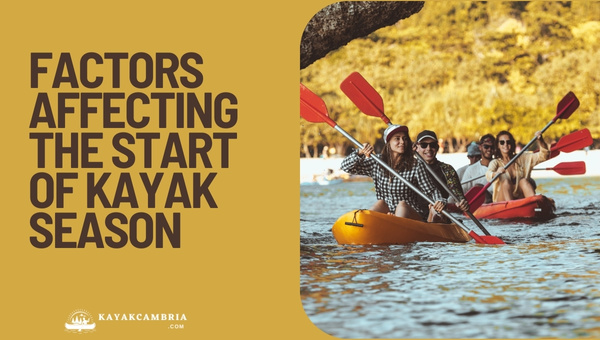
Several factors can influence the start of the kayak season. Being aware of these elements will help ensure a safe and enjoyable paddling experience. Let’s delve into the primary factors that can affect when the kayak season kicks off:
1. Water Temperature and Your Safety
One crucial factor is the water temperature. Early in the season, water bodies can still be quite cold, even if air temperatures are warm. It’s essential to research the water temperatures of the areas where you plan to kayak and consider wearing the appropriate gear, such as a wetsuit or drysuit, to protect yourself from potential cold shock or hypothermia.
2. Weather Conditions: Preparing for Sudden Changes
Next are the weather conditions in your area. Spring weather can be unpredictable, with sudden changes in temperature, wind, and precipitation. Make sure to monitor local forecasts and be prepared for any sudden shifts. Equip yourself with the proper clothing, such as windbreakers and waterproof jackets, to protect yourself from adverse conditions.
3. Water Levels and Accessibility: Understanding How to Kayak Safely and Responsibly
Lastly, water levels and accessibility play a significant role in determining when the kayak season starts. Snowmelts and spring rains can lead to high water levels and strong currents in rivers, presenting potential hazards for kayakers. It’s crucial to gather information on current water levels and how these might affect your kayaking plans. Be aware of the location of entry and exit points, and don’t hesitate to adjust your intended route or postpone your trip if necessary.
Kayak Activities And Their Influence On The Season

As the kayak season begins, various water-based activities become more popular. These activities often depend on specific factors and conditions, which can directly affect the start and duration of the season. Let’s explore some popular kayak activities and how they impact the timeline of the season.
Guided Tours and Group Excursions
Many kayaking enthusiasts prefer guided tours and group excursions. These trips, offered by professional outfitters and tour companies, provide a more structured and organized kayaking experience.
- Seasonal availability: Guided tours generally become available when weather conditions are optimal and water levels are safe for group travel. This typically begins in late spring and continues through the summer and early to mid-fall, depending on the location.
- Booking in advance: Companies typically start accepting reservations months ahead of tour start dates. Make sure to book your desired trip well in advance to ensure your spot as these excursions fill up quickly.
Kayak Fishing
Kayak fishing is an increasingly popular pastime, allowing anglers to reach more remote areas and experience a variety of fishing spots.
- Species-specific seasons: The best time for kayak fishing depends on the fish species you’re targeting. Refer to local fishing regulations for fishing seasons and guidelines in your area.
- Weather conditions: Consider the weather when planning your kayak fishing excursions. Calm conditions are often more conducive to successful fishing and provide a more enjoyable experience.
Whitewater Kayaking
This thrilling sport involves paddling through rapids on rivers and demands advanced skills.
- Rapids classification: Whitewater is classified in levels from I-VI (1 to 6) depending on the difficulty, with 6 being the most dangerous. Start with easier levels as a beginner and progressively challenge yourself as you gain experience.
- Optimal window: The prime season for whitewater kayaking depends on water volume and flow rate. Spring runoff from snowmelt often creates high water levels and strong currents, while summer and fall may have lower flow rates, providing varying experiences for paddlers.
As you plan your kayaking adventures for the upcoming season, consider the type of activity in which you’d like to participate and research the optimal time frame to ensure a safe and enjoyable experience.
Essential Gear For The Start Of Kayak Season
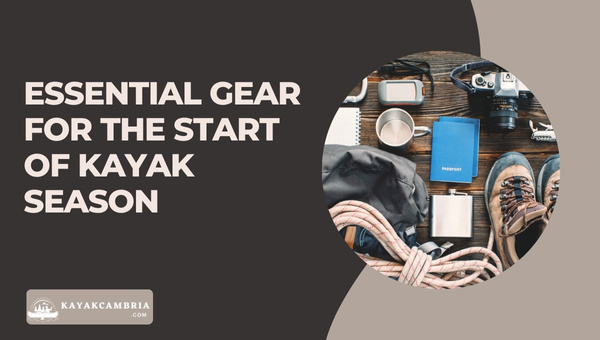
As the kayak season approaches, it’s crucial to make sure you have all the necessary gear to keep yourself safe, warm, and comfortable on the water. Here is a list of essential equipment to get you started this season.
1. Personal Flotation Device (PFD)
A PFD is a must-have when kayaking. Ensure you have a properly fitting, US Coast Guard-approved Type III or Type V PFD that provides enough buoyancy for your weight and the specific activity you plan to engage in.
2. Clothing and Layering
The weather can be unpredictable during the start of the season, so dressing in layers is a smart approach. Aim for moisture-wicking base layers, insulating mid-layers made of fleece or wool, and waterproof outer layers to protect you from wind and rain.
3. Footwear
Proper footwear is vital since you’ll be stepping in and out of the water. Consider snug-fitting water shoes, neoprene booties, or sandals with good grip to keep your feet safe and warm.
4. Paddle
Picking out the right paddle for your height, kayak type, and paddling style will make a huge difference in your efficiency on the water. Opt for one made of lightweight materials like carbon fiber or fiberglass for better performance.
5. Spray Skirt
If you’re using a sit-inside kayak, a spray skirt is essential in keeping you dry and preventing water from filling the cockpit. Ensure it fits securely around both the cockpit rim and your waist.
6. Dry Bags and Storage
Invest in dry bags to keep extra clothes, electronics, and other essentials protected from water. Proper storage solutions will ensure your belongings are secure and accessible during your trip.
7. Safety Equipment
Prepare for unforeseen circumstances by carrying essential safety gear, including a bilge pump to remove water from the cockpit, a paddle float for self-rescue, a whistle, and navigation tools (such as a map, compass, or GPS). Don’t forget to bring a first-aid kit and any necessary medications.
As you gear up for the start of kayak season, ensure you have all the essentials listed above. It’s always better to be over-prepared than caught in an emergency situation without the proper equipment.
Pre-Season Preparation: Getting Ready For Kayak Season
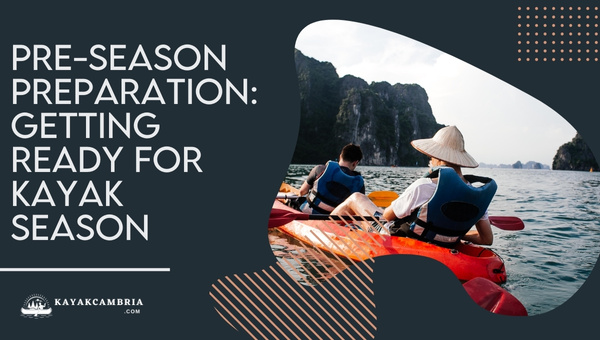
As the kayak season approaches, it’s essential to take some time for pre-season preparation. By ensuring your equipment is in top shape, brushing up on skills, and planning your trips, you’ll be more than ready to hit the water when the season finally arrives. Let’s dive into the key steps for getting ready for kayak season.
1. Inspecting and maintaining your kayak
Before setting off on your first paddling adventure, make sure to give your kayak a thorough once-over. Check for any damage, such as cracks or abrasions, and attend to repairs as necessary. If you have an inflatable kayak, inspect the seams and valves for leaks. Also, take the time to tighten any loose hardware and clean the kayak’s hull. By addressing any potential issues early on, you’ll avoid unexpected surprises when out on the water.
2. Brushing up on paddling skills and safety
No matter how experienced you are, it’s always beneficial to brush up on your paddling skills and safety knowledge. Take a moment to review essential safety tips, such as wearing a life jacket (personal floatation device), proper paddling techniques, and self-rescue strategies. If you want to enhance your skills, consider taking a kayaking course, watching instructional videos online, or reviewing paddling books.
3. Planning your kayaking trips in advance
Determining where and when you want to kayak this season can not only build excitement but also help you be more prepared. Research potential destinations, taking into account local conditions, weather patterns, and user reviews. Utilize resources like a launch map to find suited routes and launches. Creating a trip itinerary, complete with checklists for gear and safety procedures, can ensure you have a smooth experience every time you hit the water.
Embracing The Kayak Community: Connecting With Others
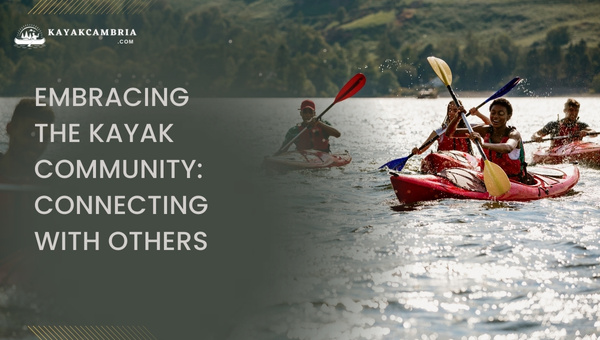
Getting into kayaking not only provides an exhilarating experience but also gives you the opportunity to be part of a vibrant and supportive community of like-minded individuals. By connecting with fellow kayak enthusiasts, you can share tips, and stories, and create lasting friendships. In this section, I’ll explore various ways to embrace the kayak community and expand your network.
Joining Local Kayaking Clubs or Meetups
One of the best ways to connect with other kayakers is by joining local clubs or meetups. Most cities and towns with nearby water bodies have kayaking clubs or groups that organize regular outings, training sessions, and social events. You can search for these clubs on Meetup.com or through a simple Google search. As a member of these clubs, you’ll typically enjoy benefits such as exclusive access to club events, discounts on gear, and, most importantly, the camaraderie of fellow paddlers.
Participating in Online Kayaking Forums and Discussion Groups
The Internet offers a wealth of resources for kayakers to connect, share experiences, and ask questions. Several online forums and discussion groups cater specifically to the kayaking community. By participating in online communities, you can learn from the experiences of others, troubleshoot issues, and keep up-to-date with the latest kayaking news and trends.
Attending Kayaking Events and Festivals
Throughout the year, numerous kayaking events and festivals take place worldwide, attracting thousands of paddlers. These events often include races, clinics, gear showcases, and social gatherings. Attending such events enables you to meet other kayaking enthusiasts, learn from experts, and be part of a larger kayak community while indulging in a shared passion. Some well-known events include the Deception Pass Dash in Washington and the James River Rundown in Virginia.
As you venture into the world of kayaking, don’t shy away from making connections within this fantastic community. Whether it’s through local clubs, online forums, or attending events, remember that the experiences you share and the friendships you form will only enhance your love for kayaking.
Responsible Kayaking: Environmental Considerations
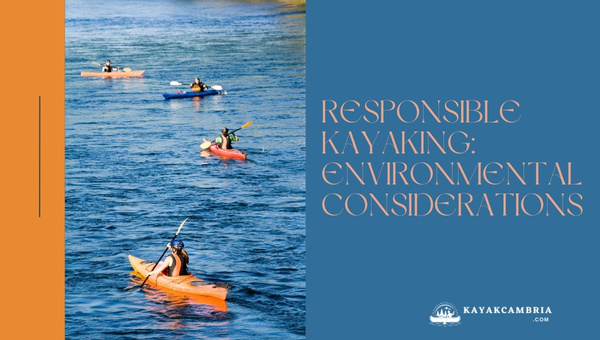
As avid kayakers, we have a responsibility to protect and preserve the beautiful waterways we explore. It’s crucial that we follow environmentally friendly practices while out on the water. Here, I’ll discuss some essential aspects of responsible kayaking and how we can minimize our impact on the environment.
Stay informed about local regulations and restrictions
Each region may have its set of rules and regulations in regard to water access, wildlife interaction, and disposal of waste. Before heading out, make sure to check with local authorities or online resources to familiarize yourself with these guidelines. Respecting these rules ensures the long-term sustainability of the waterways we love to kayak in.
Be aware of the impact of watercraft on local ecosystems
Kayakers should be mindful of their surroundings and avoid disturbing local wildlife. Paddling too close to nesting birds or wildlife can stress these animals and potentially harm them. Additionally, stay alert to potential underwater hazards like submerged vegetation or rocks, as this can protect both your kayak and the delicate balance of aquatic ecosystems.
Practicing Leave No Trace Principles while Kayaking
One foundational aspect of responsible kayaking is adhering to the Leave No Trace Principles. These guidelines, applicable to all outdoor activities, aim to minimize our impact on the environment. Here are some key principles to follow while kayaking:
- Plan ahead and prepare: Ensure you have all the necessary gear, familiarize yourself with the area, and be aware of potential hazards.
- Travel and camp on durable surfaces: Stick to established pathways and designated camping areas.
- Dispose of waste properly: Carry any trash with you and, if possible, pick up litter left by others.
- Leave what you find: Do not disturb plant life, rocks, or any cultural artifacts.
- Minimize campfire impact: Use a camp stove instead of making a fire or, if you must, use established fire rings and keep fires small.
- Respect wildlife: Observe from a distance and avoid feeding any animals.
- Be considerate of other visitors: Keep noise levels down and respect the peace and tranquility of the water.
By following these principles and respecting our shared waterways, we can ensure that these beautiful locations remain pristine for future generations of kayakers to enjoy.
Frequently Asked Questions
1. How long does the average kayak season last?
The length of the kayak season can greatly vary depending on your geographical location and the type of water body you plan to kayak in. Generally, it begins in early spring and extends until late fall, typically spanning from April to October. However, in warmer climates, the season may last year-round, while colder regions may experience a shorter kayaking season.
2. Is it safe to kayak during the off-season?
Kayaking during the offseason can be risky due to factors such as colder water temperatures, unpredictable weather conditions, and increased water levels. It is essential to check weather forecasts, water conditions, and local regulations before attempting off-season kayaking. When in doubt, consult with experienced paddlers or local authorities to assess the safety of kayaking during the offseason.
3. Do I need a permit to kayak in certain areas?
In some regions, permits may be required to kayak in specific bodies of water, especially in protected natural areas. Research the locations you plan to visit for information on possible permit requirements, fees, and restrictions. Information related to permits can often be found on local government or park service websites.
4. Can I kayak during the COVID-19 pandemic?
While the COVID-19 pandemic may have impacted many aspects of our lives, kayaking can still be a safe, responsible outdoor activity if you follow recommended health guidelines. Always practice social distancing on the water, wear masks or face coverings when near others, and sanitize your equipment properly. Confirm with local authorities or parks regarding any area restrictions or additional precautions required during this time.
5. Is it safe for beginners to kayak right at the start of the season?
If you’re new to kayaking or just starting out, it is advised to paddle in calm water bodies such as lakes or gentle rivers. Early spring can sometimes have unpredictable weather, cold water temperatures, and increased water levels, which might pose challenges for inexperienced paddlers. It’s best to start in warmer, calmer times of the year to build your skills and confidence before taking on more challenging conditions or venturing further afield.
Conclusion
There is no one-size-fits-all answer to the question, “When does kayaking season start?” With factors such as geographical location, climate, water bodies, and specific activities influencing the optimal time for kayaking, it’s crucial to consider all relevant aspects to plan your kayaking adventures accordingly. Always prioritize personal safety, and environmental responsibility, and keep up-to-date with necessary skills and knowledge. And most importantly, have a fantastic time out on the water!
As you prepare for the upcoming kayak season, remember to:
- Assess your region’s climate and weather patterns, ensuring you’re informed about the best time for kayaking in your area
- Check the conditions for the particular water body you plan to kayak in, such as lakes, rivers, or oceans
- Consider the kayak activities you plan to engage in and their influence on the season – from guided tours and fishing to whitewater kayaking
- Equip yourself with the essential gear needed for variable weather and water conditions
- Engage with the online and local kayaking community to learn, share experiences, and expand your network
- Stay informed about environmental impacts and practice responsible kayaking by adhering to local regulations and Leave No Trace principles
Enjoy the thrill and serenity of kayaking, and may you have an incredible time exploring the beauty and diversity of the great outdoors.

